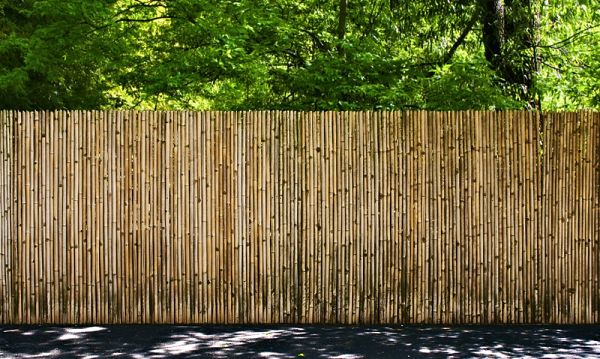All Categories
Featured
Not only does this secure your fence from the elements, however it additionally assists preserve the wood's all-natural appearance. Lots of home owners question: How often should I paint or discolor my wooden fence?
The answer relies on numerous elements, consisting of the sort of timber, the climate in your location, and whether the fencing is discolored or painted. Let's break down the key factors to consider to help you figure out the suitable timetable for paint or staining your wood fencing.
Sun Direct Exposure: Surround locations with extreme sunshine are more vulnerable to drying, fading, and fracturing. This means you might need to repaint or restain your fencing every 2 to 3 years to shield it from UV damages. Rainfall and Humidity: Fence areas with heavy rain or high moisture can soak up moisture, triggering the timber to swell, warp, or rot. Discoloration can give a safety obstacle, but you may require to restain every 2 years or so to keep the wood sealed and safeguarded. Snow and Cold Temperatures: If your fence is in a location with cool wintertimes, cold and thawing cycles can tarnish or create the paint to crack and peel off. Depending on your climate, you might need to repaint or restain every 3 to 5 years. 2. Sort of Wood. The kind of wood used for your fence likewise affects how often you need to use paint or discolor. Various timbers react in different ways to moisture and sunshine, so the maintenance timetable can differ.
![]()
Cedar and Redwood: These normally sturdy woods withstand rot and pest damages, yet they can discolor with time due to sun direct exposure. If you desire to preserve the timber's abundant color, you may need to stain or secure it every 2 to 3 years. Pine and Fir: Softwoods like want and fir are a lot more susceptible to weathering, and they often tend to soak up moisture quicker. As an outcome, you may require to tarnish or repaint these woods much more often, probably every 1 to 2 years, to protect versus water damage and staining. Pressure-Treated Timber: Pressure-treated timber is created to withstand rot and bug damages. However, it still calls for sealing to stop wetness absorption. Depending upon exposure, an excellent stain or sealer may require to be reapplied every 2 to 3 years. 3. Repaint vs. Stain. Whether you paint or tarnish your fence can additionally affect exactly how typically it needs upkeep.
Paint: Paint offers a thicker, a lot more opaque layer of security, blocking UV rays and dampness. Nonetheless, paint can chip, peel, and fracture over time, especially in locations with severe climate condition. Typically, painted fences need to be repainted every 3 to 5 years, but this can vary depending upon direct exposure to the aspects. Tarnish: Discolor permeates the timber, offering a much more natural look while using some protection against the sunlight and moisture. Tarnish has a tendency to wear off extra rapidly than paint, so you may need to restain your fence a lot more regularly-- normally every 2 to 3 years. The advantage of discolor is that it does not peel, making it much easier to preserve over time. 4. Indications That It's Time to Paint or Restain. Also if you do not have a collection routine, there are a number of indications that indicate it's time to repaint or restain your fence:
Fading or Discoloration: If your fencing has actually shed its abundant shade and shows up faded or grey, it's time to add a fresh coat of paint or tarnish. Cracking or peeling off: If you discover peeling off paint or cracking tarnish, your fencing is no much longer completely safeguarded, and it's time to retouch or start over. Water Absorption: An easy examination can aid you identify if your fencing is still sufficiently sealed. Sprinkle some water externally; if it beads up, the paint or discolor is still doing its work. It's time to reapply if the water saturates into the wood. 5. Correct Preparation and Application. Correct preparation is important for durable results when it's time to paint or tarnish. Tidy the fencing extensively to get rid of mold and mildew, dirt, or mold, and repair any kind of broken areas before applying paint or stain. For the best outcomes, choose a dry, light day for application-- prevent paint in severe heat or humidity, as it can tarnish or trigger the paint to dry too rapidly or unevenly.
![]()
Final thought. Generally, you need to intend to paint or stain your wood fencing every 2 to 3 years, though the precise routine will certainly depend on your climate, the type of timber, and whether you've repainted or discolored the fence. Normal maintenance not only aids keep your fencing looking terrific but additionally expands its life expectancy by shielding the timber from moisture, UV rays, and various other environmental aspects. By remaining on top of this task, you'll guarantee your fencing stays both beautiful and useful for many years ahead.
The answer relies on numerous elements, consisting of the sort of timber, the climate in your location, and whether the fencing is discolored or painted. Let's break down the key factors to consider to help you figure out the suitable timetable for paint or staining your wood fencing.
- Environment and Weather Condition Issues. The climate in your location plays a major function in exactly how typically your fencing requires upkeep. Fences in locations with rough weather, such as high humidity, heavy rainfall, or intense sunlight direct exposure, will certainly need more frequent painting or staining than those in pleasant environments.
Sun Direct Exposure: Surround locations with extreme sunshine are more vulnerable to drying, fading, and fracturing. This means you might need to repaint or restain your fencing every 2 to 3 years to shield it from UV damages. Rainfall and Humidity: Fence areas with heavy rain or high moisture can soak up moisture, triggering the timber to swell, warp, or rot. Discoloration can give a safety obstacle, but you may require to restain every 2 years or so to keep the wood sealed and safeguarded. Snow and Cold Temperatures: If your fence is in a location with cool wintertimes, cold and thawing cycles can tarnish or create the paint to crack and peel off. Depending on your climate, you might need to repaint or restain every 3 to 5 years. 2. Sort of Wood. The kind of wood used for your fence likewise affects how often you need to use paint or discolor. Various timbers react in different ways to moisture and sunshine, so the maintenance timetable can differ.

Cedar and Redwood: These normally sturdy woods withstand rot and pest damages, yet they can discolor with time due to sun direct exposure. If you desire to preserve the timber's abundant color, you may need to stain or secure it every 2 to 3 years. Pine and Fir: Softwoods like want and fir are a lot more susceptible to weathering, and they often tend to soak up moisture quicker. As an outcome, you may require to tarnish or repaint these woods much more often, probably every 1 to 2 years, to protect versus water damage and staining. Pressure-Treated Timber: Pressure-treated timber is created to withstand rot and bug damages. However, it still calls for sealing to stop wetness absorption. Depending upon exposure, an excellent stain or sealer may require to be reapplied every 2 to 3 years. 3. Repaint vs. Stain. Whether you paint or tarnish your fence can additionally affect exactly how typically it needs upkeep.
Paint: Paint offers a thicker, a lot more opaque layer of security, blocking UV rays and dampness. Nonetheless, paint can chip, peel, and fracture over time, especially in locations with severe climate condition. Typically, painted fences need to be repainted every 3 to 5 years, but this can vary depending upon direct exposure to the aspects. Tarnish: Discolor permeates the timber, offering a much more natural look while using some protection against the sunlight and moisture. Tarnish has a tendency to wear off extra rapidly than paint, so you may need to restain your fence a lot more regularly-- normally every 2 to 3 years. The advantage of discolor is that it does not peel, making it much easier to preserve over time. 4. Indications That It's Time to Paint or Restain. Also if you do not have a collection routine, there are a number of indications that indicate it's time to repaint or restain your fence:
Fading or Discoloration: If your fencing has actually shed its abundant shade and shows up faded or grey, it's time to add a fresh coat of paint or tarnish. Cracking or peeling off: If you discover peeling off paint or cracking tarnish, your fencing is no much longer completely safeguarded, and it's time to retouch or start over. Water Absorption: An easy examination can aid you identify if your fencing is still sufficiently sealed. Sprinkle some water externally; if it beads up, the paint or discolor is still doing its work. It's time to reapply if the water saturates into the wood. 5. Correct Preparation and Application. Correct preparation is important for durable results when it's time to paint or tarnish. Tidy the fencing extensively to get rid of mold and mildew, dirt, or mold, and repair any kind of broken areas before applying paint or stain. For the best outcomes, choose a dry, light day for application-- prevent paint in severe heat or humidity, as it can tarnish or trigger the paint to dry too rapidly or unevenly.

Final thought. Generally, you need to intend to paint or stain your wood fencing every 2 to 3 years, though the precise routine will certainly depend on your climate, the type of timber, and whether you've repainted or discolored the fence. Normal maintenance not only aids keep your fencing looking terrific but additionally expands its life expectancy by shielding the timber from moisture, UV rays, and various other environmental aspects. By remaining on top of this task, you'll guarantee your fencing stays both beautiful and useful for many years ahead.
Latest Posts
Picking the Right Roofing Color: Influence On Power Performance
Published en
1 min read
Explore Your Financial Partner at WyHy – Member-Focused Services for Your Goals
Published en
1 min read
Uncover Premier Vehicle Maintenance Care offered by Montclare Auto Repair – Drive with Confidence
Published en
1 min read
More
Latest Posts
Picking the Right Roofing Color: Influence On Power Performance
Published May 25, 25
1 min read
Explore Your Financial Partner at WyHy – Member-Focused Services for Your Goals
Published May 24, 25
1 min read
Uncover Premier Vehicle Maintenance Care offered by Montclare Auto Repair – Drive with Confidence
Published May 22, 25
1 min read